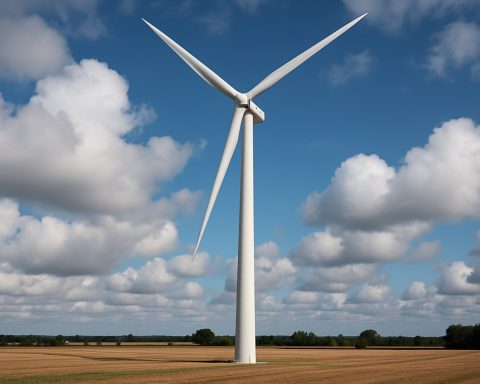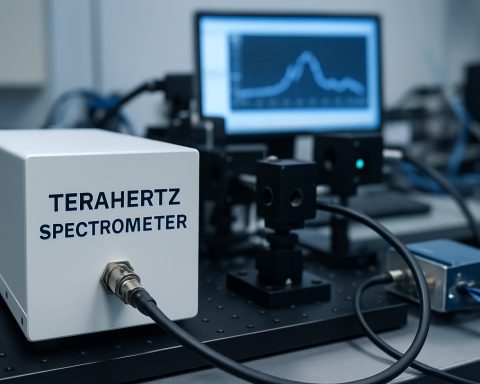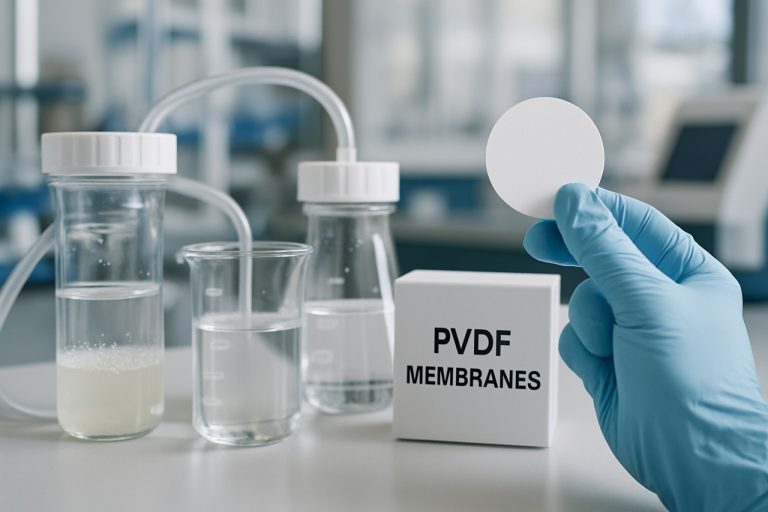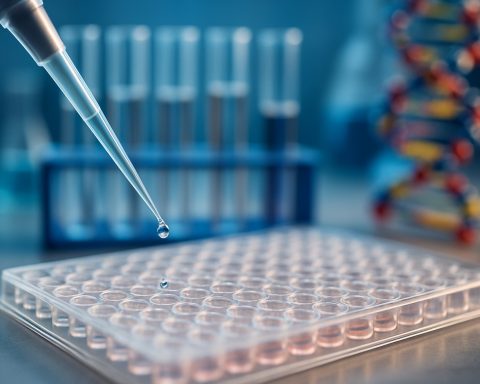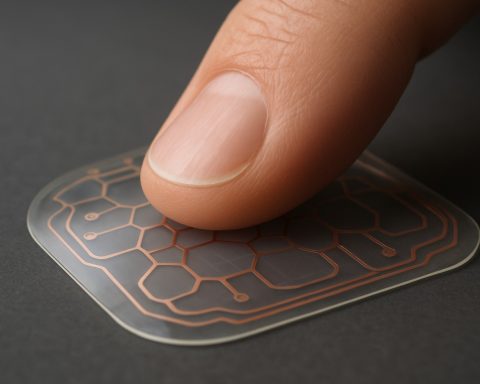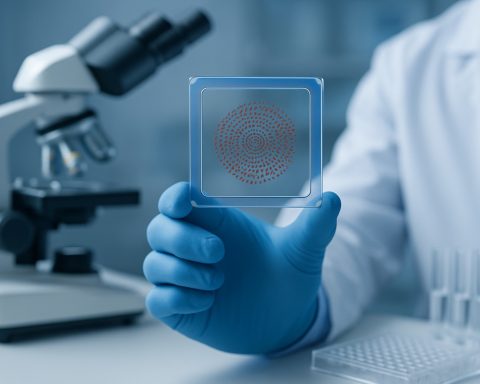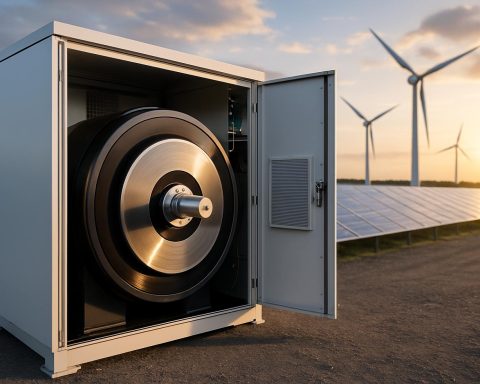- CATL has rapidly become the world’s leading lithium-ion battery manufacturer, powering electric vehicles and clean energy infrastructure globally.
- The company’s success is driven by strong government support, focus on R&D, and strategic innovation in battery chemistry and technology.
- CATL supplies high-density batteries to major automakers, accelerating the adoption of electric vehicles and impacting global emission standards.
- Its battery storage solutions help renewables like wind and solar compete with traditional fossil fuels by ensuring reliable energy storage.
- CATL’s dominance is reshaping the battery industry, sparking global competition and scrutiny over environmental and supply chain practices.
- The company’s rise highlights the pivotal role of batteries in the clean energy transition and the future of global power dynamics.
Clouds drift over a sea of jade-green hills, broken only by the improbable silhouette of a building that commands attention—a shimmering glass emblem, echoing the shape of a lithium-ion battery. This is not science fiction. It’s the headquarters of CATL, Contemporary Amperex Technology Company, a name now spoken with both envy and admiration across the energy world.
Once just a modest startup in 2011, CATL has surged to dominate not only China’s electric vehicle battery sector, but the global market itself. The company’s skyward ascent mirrors China’s fast-moving ambitions: leveraging robust government backing, a strategic domestic market, and relentless innovation.
From this hub in Ningde, CATL orchestrates a shadow revolution. Fleets of electric buses hum through megacities across four continents, their silent powertrains beating with CATL batteries. Global automakers—think of the likes of Tesla and BMW—line up for the company’s high-density cells, eager to electrify their own offerings and meet tightening emissions standards.
CATL’s rise is no accident. The company pours billions into research, pushing battery chemistry further each year. Its recent breakthroughs promise longer range, faster charging, and safer materials—technologies on the cusp of turning electric dreams into mainstream reality.
But the impact stretches beyond cars and buses. Utility-scale battery installations, powered by CATL, are quietly writing a new chapter in the world’s quest for clean energy. These massive storage units allow renewable sources—wind and solar—to finally challenge the fickle nature of traditional fossil fuels, storing surplus energy for when it’s needed most.
Yet such dominance invites scrutiny. Global competitors rush to catch up, with battery players in South Korea, Japan, and Europe fueling their own races. Meanwhile, CATL’s supply chains—linked to the crucial, but controversial, mining of lithium—draw the eyes of environmentalists and policymakers alike.
The big picture remains clear: batteries are the heart of the modern energy transition, and CATL now sits at the center. Its shimmering headquarters—part science lab, part logistical nerve center, and part symbol of national ambition—reminds the world that whoever controls the battery may ultimately control the very currents of tomorrow’s economies.
The key takeaway: As nations vie for clean energy leadership, the balance of power increasingly rests not in oil fields, but in cells and circuits. In this new world, manufacturing ingenuity and visionary investment create tomorrow’s titans. CATL’s story is unfolding in real time—an electrifying reminder that the future is being built, charge by charge, from the ground up.
For more insights into global energy trends and technology breakthroughs, visit NYTimes or explore updates from Reuters.
“Inside CATL: The Battery Superpower Shaping the World’s Clean Energy Future”
# CATL: Unseen Facts, Industry Insights, and What the World Needs to Know
Contemporary Amperex Technology Company Limited (CATL) stands at the epicenter of the global clean energy revolution. While the original article paints a vivid picture of CATL’s rise and its glittering headquarters, there’s much more to understand about this battery powerhouse and its profound impact on electric vehicles, renewable energy, and geopolitics. Here’s a deep dive into CATL’s broader story—packed with extra facts, real-world applications, industry analysis, and actionable advice.
—
Additional Facts & Figures About CATL
– Global Market Share: As of 2023, CATL supplies around 37% of the world’s EV batteries, making it the uncontested sector leader (Source: SNE Research, Bloomberg).
– Clients: CATL’s battery technology powers not just Tesla and BMW but also Mercedes-Benz, Volkswagen, Hyundai, Honda, and even domestic giants like SAIC and NIO.
– Production Capacity: By 2024, CATL’s annual battery production capacity is projected to exceed 400 GWh, outpacing competitors like LG Energy Solution and Panasonic.
– Patents and R&D: Holding over 8,000 patents, CATL spends approximately $1 billion annually on research, a sum anticipated to grow as they chase next-generation solids and sodium-ion chemistries.
– Raw Material Partnerships: The company secures lithium, cobalt, and nickel through global mining investments, including major projects in Africa, Australia, and Latin America—heightening scrutiny over environmental and ethical practices.
—
Battery Innovation: What Sets CATL Apart?
– Chemistry Advancements: CATL leads in lithium iron phosphate (LFP) cells, which offer enhanced safety, long cycle life, and lower cost than traditional nickel manganese cobalt (NMC) batteries.
– Sodium-Ion Batteries: In 2021, CATL became the first to unveil a commercial sodium-ion battery—an innovation with the potential to reduce dependence on scarce lithium (Source: CATL Press).
– Cell-to-Pack (CTP) Technology: By eliminating intermediate modules, CATL’s CTP packs increase energy density and cut manufacturing costs—a major draw for automakers.
– Ultra-Fast Charging: The most recent “Shenxing” LFP battery can reportedly add 400 km (about 250 miles) of range in just 10 minutes of charging.
—
Real-World Use Cases
– Grid-Scale Storage: CATL supplies massive battery farms for utilities in Germany, the U.S., and China, enabling stable renewable (wind and solar) integration and grid balancing.
– Public Transportation: Tens of thousands of e-buses across Asia, Europe, and Latin America run on CATL packs, reducing urban air pollution.
– Commercial Vehicles: Delivery companies like DHL and JD.com deploy CATL-powered vans for last-mile green logistics.
—
Reviews, Comparisons & Market Trends
– Industry Comparisons: LG Energy Solution (Korea), Panasonic (Japan), SK On (Korea), and BYD (China) are key rivals, but CATL’s scale and innovation put it ahead. European startups (like Northvolt) are gaining ground, but currently lag in capacity.
– EV Adoption Trends: Battery costs have dropped almost 90% since 2010, and experts forecast global EV sales will hit 50% of all car sales by 2035 (Source: International Energy Agency, BNEF).
– Price Volatility: Battery pack prices averaged $138 per kWh in 2023. CATL’s breakthroughs drive further reductions, critical for affordable mass adoption.
—
Controversies, Environmental Impacts & Limitations
– Supply Chain Risks: CATL, like peers, faces ongoing criticism regarding cobalt mining (notably in Congo), tying battery tech to environmental harm and labor abuses.
– Reliance on Rare Materials: Global lithium shortages risk supply bottlenecks, driving CATL’s interest in sodium-ion and alternative chemistries.
– Recycling Challenges: While “second-life” applications and recycling programs are growing, battery disposal and end-of-life management remain major industry challenges.
—
Security, Sustainability & Future-Proofing
– Fire Safety: CATL’s LFP batteries are less prone to “thermal runaway” than older types, reducing fire risk in EVs and storage systems.
– Sustainability Initiatives: The company is investing in closed-loop recycling (retrieving metals from expired batteries) and aims for carbon neutrality by 2035.
– Cybersecurity: As batteries become smarter and networked via IoT, CATL’s systems undergo frequent security audits to thwart hacking risks.
—
Most Pressing Reader Questions: Expert Answers
1. Will CATL batteries appear in more affordable vehicles in the West?
Yes—brands like Tesla, Ford, and others increasingly use LFP-based CATL packs in entry-level EVs for affordability and longevity (Source: Electrek, Reuters).
2. Are CATL batteries safe?
Safety is a competitive advantage—LFP batteries are chemically stable, and new solid-state designs are even safer (Source: Bloomberg).
3. What happens to old CATL batteries?
Most are recycled or repurposed for stationary energy storage. CATL operates dedicated recycling plants in China and is expanding globally.
—
Actionable Recommendations & Life Hacks
– How-To: Choose an EV with LFP Batteries
1. Research the specific battery type before purchasing—seek LFP for affordability and safety.
2. Opt for vehicles offering battery warranties (8+ years).
3. Inquire about a brand’s recycling and sustainability practices.
– Quick Life Hack:
– If you drive an EV powered by LFP/CATL batteries, regular partial charging (rather than full or zero charge cycles) extends life.
– Use reputable, manufacturer-authorized charging stations to reduce fire risk.
—
Industry Insights & Predictions
– Future Trends: CATL will likely remain a dominant player until at least 2030, as solid-state, sodium-ion, and hybrid chemistries reach commercial scale. Expect acceleration of battery gigafactories in Europe and North America to reduce over-reliance on Chinese suppliers.
– Investment Watch: Batteries are the “new oil.” Nations and automakers are investing billions in local manufacturing and recycling to ensure national energy security.
—
Quick Pros & Cons Overview
Pros
– Unmatched battery scale and innovation
– Industry-leading safety and performance
– Lower costs through vertical integration
Cons
– Environmental and ethical mining concerns
– Global supply chain vulnerabilities
– Reliance on China for critical battery infrastructure
—
For up-to-the-minute global perspectives and deeper business analysis on energy tech, keep an eye on NYTimes and Reuters.
Immediate Tip:
If in the market for an electric vehicle, prioritize models with CATL’s LFP batteries for maximum reliability, safety, and long-term savings. Watch for upcoming sodium-ion breakthroughs, which could radically reshape battery affordability and availability in just a few years.
—
Keywords: CATL, electric vehicle batteries, LFP, sodium-ion, battery recycling, energy storage, green technology, energy transition, battery innovation, EV market trends


